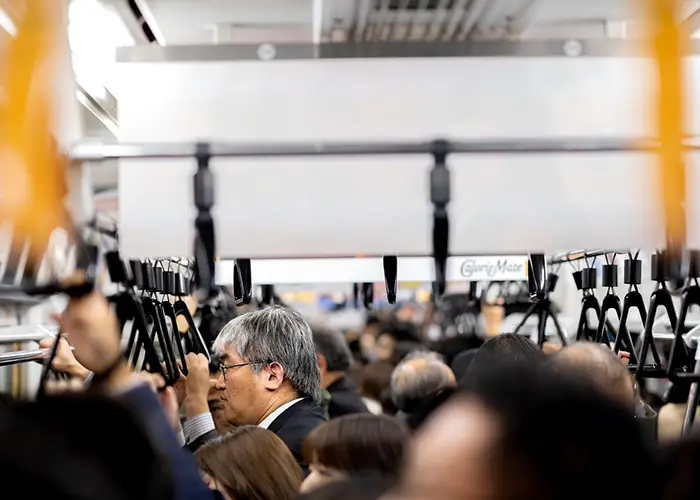Transportation is a vital aspect of traveling, impacting the efficiency of the journey and experience. The choices travelers make depend on various factors, including budget, destination, convenience, and individual preferences. As transportation evolves with technological advances, travelers are faced with more options than ever before. Understanding these factors can help individuals select the most suitable mode of transportation for their needs, ensuring a smoother journey. When assessing transportation methods, we must consider multiple dimensions that affect our choices, from ridesharing services to public transportation.

Cost Considerations
The cost of transportation is often the foremost consideration for travelers. Whether one is commuting to work or embarking on a vacation, the budget plays a critical role in decision-making. Flying might be the quickest option over long distances, but it can be relatively expensive when compared to driving or taking a bus.
Analyzing the costs of various transportation modes allows travelers to allocate their budget more efficiently. With the rise of ridesharing options, passengers can save money by sharing rides with others heading in the same direction, reducing both expenses and environmental impact. Comparing costs across different platforms and booking in advance can further help travelers secure the most economical and convenient transportation choices.
Convenience and Accessibility
Accessibility and convenience significantly affect transportation choices. For travelers, the availability of services and how easy they are to use often determines their selection. Many urban areas now offer extensive public transportation systems, allowing passengers to navigate cities with relative ease.
Factors such as service frequency, route coverage, and station locations can either enhance or hinder a traveler’s experience. Carpooling options have gained popularity because they provide easy access and can be hailed on demand via a smartphone app, making them an attractive choice for many. This ease of access plays a crucial role in a person’s decision on which method to choose, particularly in urban environments where traditional public transport may not meet needs fully.
Time Efficiency
Time is a critical factor when selecting transportation options. Different modes can vary significantly regarding travel time, which can directly affect a traveler’s schedule. While trains or buses may be cheaper, they often take longer due to stops along the way or slower travel speeds. Flying is usually faster, but it can be time-consuming when considering check-in and security procedures at the airport.
Carpooling options offer the potential for quicker travel, particularly in cities where traffic patterns are manageable and rides can replace longer waits for public transport. Time-sensitive travelers must weigh these factors carefully to maximize efficiency and ensure they reach their destinations on schedule.
Environmental Impact
Increasing awareness of environmental issues has led many to consider the ecological impact of their transportation choices. Travelers are more informed about carbon footprints, leading them to seek out sustainable options. Public transportation typically produces fewer emissions per passenger than private vehicles, making it an appealing choice for eco-conscious individuals. Likewise, practices like carpooling align well with environmental goals.
Carpooling options allow for ride-sharing features, enabling multiple passengers traveling in similar directions to conserve energy and reduce emissions effectively. By choosing environmentally friendly modes of transport, individuals contribute to reducing their impact on the environment while traveling.
Comfort and Personal Preference
Comfort plays a significant role in transportation choices, as different travelers have varying levels of tolerance for cramped spaces or crowded environments. Some may enjoy the leisurely experience of a scenic train ride, whereas others might prefer the comfort of a personal vehicle.
The environment and amenities surrounding each mode also influence comfort levels. If nothing is available but packed subway cars, a less favorable journey can result, leading some to opt for more comfortable ridesharing services instead. Recognizing the importance of comfort can help travelers make better decisions when planning their journeys.
Destination and Accessibility
The destination significantly influences transportation choices, with considerations varying according to local infrastructure. Some areas are well-served by public transport networks, while others may only be reachable by car or rideshare services.
Travelers venturing into rural or less-developed areas may find few options available, leading to an inevitable dependence on ride services or personal vehicles. Urban settings usually contrast dramatically, with cabs and carpooling options abundant.
The unique attributes of a destination can dictate the available transportation choices. Understanding local transportation infrastructures can greatly enhance travel experiences and decisions, allowing reasonably accurate predictions about potential accessibility depending on location.
Safety and Security
Safety is always a pressing concern for travelers and significantly influences the choice of transportation. While public transportation can be safe, concerns like crime rates, vehicle conditions, and reliability often come into play.
Many passengers prefer carpooling options due to their ability to select rides based on reviews and ratings of individual drivers. This aspect adds a significant layer of security that passengers may not find in traditional public transport options.
With the introduction of safety features such as driver tracking and emergency alert buttons, ridesharing companies are often perceived as providing enhanced safety measures. The vigilance toward safety fosters diverse transportation choices based on individual comfort levels and personal experiences with various services.
Technology Adoption
The advancement of technology continues to foreshadow how transportation alternatives are structured and chosen. Mobile applications have revolutionized how people plan journeys, review fares, and access transportation- creating a more accessible platform for travelers.
Technology helps users stay informed about real-time travel conditions, which can influence whether to select public service versus rideshare services. Real-time updates about traffic can cause a traveler to select a ridesharing service over waiting for a delayed bus. The integration of technology creates faster, more convenient travel experiences, allowing users to make informed decisions based on their current needs.

Transportation choices shape each journey in several ways through cost, convenience, time, environmental impact, comfort, destination, safety, and technology. A comprehensive understanding of these factors can help ensure that individuals choose transportation methods tailored to their specific needs. As options expand, travelers will likely become more strategic in their choices, aiming for more tailored, efficient travel experiences that prioritize sustainability, personal comfort, and long-term value while adapting to evolving technologies and changing global mobility trends.





